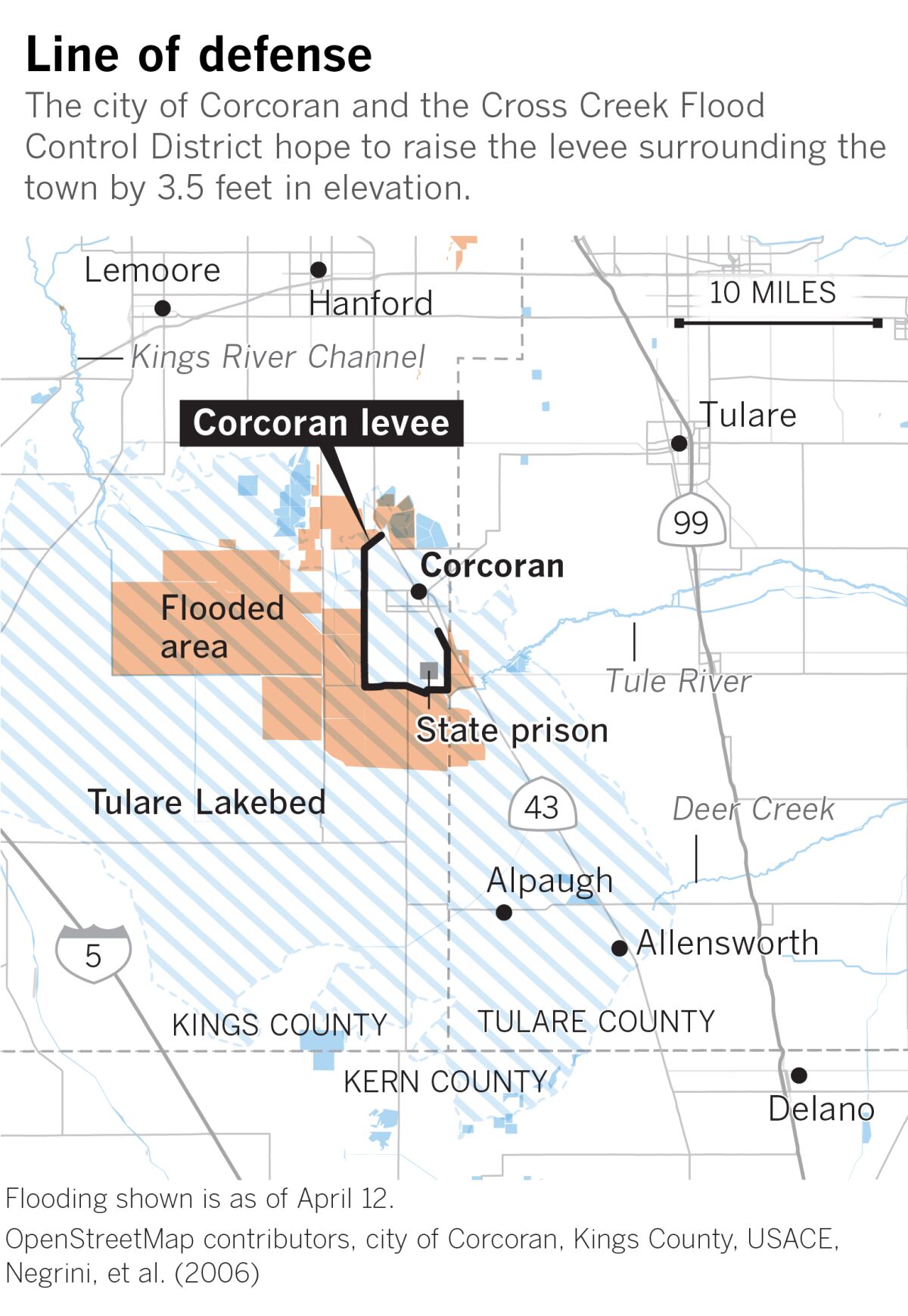Good morning, and welcome to the Essential California newsletter. It’s Tuesday, April 25.
A heat wave is headed straight for Central California’s massive snowpack this week, which forecasters say could trigger rapid melting in the mountains and flooding in the San Joaquin and Owens valleys.
Regional temperatures could climb into the mid-90s beginning Wednesday and into the weekend. And with lows expected in the 40s, the Sierra Nevada snowmelt could start running around the clock.
“The ‘big melt’ is now here,” UCLA climate scientist Daniel Swain told my colleague Hayley Smith. “We said there would eventually be some week between about March and May when the rate of snowmelt dramatically increased, either due to a heat wave or late-season warm storm. I think this is probably that week now.”
A civic nightmare
In one town, the threat of melting snow promises “a civic nightmare.”
My colleagues Jessica Garrison, Susanne Rust and Ian James traveled to Corcoran, Calif., a small farming town in the Central Valley. As of two months ago, the town has a brand-new neighbor: Tulare Lake, a vast, murky sea that did not exist two months ago.
A 14.5-mile dirt levee is all that protects the community of about 22,000 from all that water.
But as mountain snow melts and fills the nearby Tule River, city officials and residents fear the rising waters could cause a catastrophic breach.

(Paul Duginski / Los Angeles Times)
“People are scared,” local farmer Kirk Gilkey told my colleagues. “[If] Corcoran floods, it’ll be a ghost town after. It won’t survive.”
The majority-Latino town is home to many farmworkers whose livelihoods are already in jeopardy from earlier flooding that inundated fields and poses long-term threats to crops vital to the region’s economy. The long-dry basin of vineyards, orchards and other agriculture remains engulfed in floodwater.
Shifting responsibility
Corcoran’s leaders have been trying to secure state and federal funds to reinforce the levee and raise it by 3.5 feet. As local funds dry up, City Manager Greg Gatzka said the city has heard that state and federal officials are “working on” assistance for the levee. “It needs to come faster.”
Gatzka is “beyond frustrated” by the difficult process of securing emergency funding and may end up asking local farmers to donate to support the project as a “desperate last resort.”
If those efforts fail, the floods come and the levee cannot hold, farmers will not be the only ones affected. There are about 8,000 men incarcerated in a massive state prison complex near the levee’s southeastern edge.
“Rumors abound that the prison is secretly evacuating prisoners in advance of flooding,” my colleagues wrote. A spokeswoman for the Department of Corrections denied those rumors but said the facility has stopped accepting new prisoners.
So how are state and federal officials responding? Jessica, Susanne and Ian write that “officials at several state and federal agencies said they are monitoring the situation closely but referred questions — and responsibility — back to local officials.”
No comments:
Post a Comment